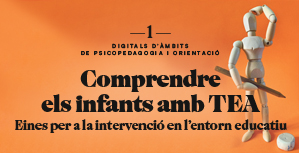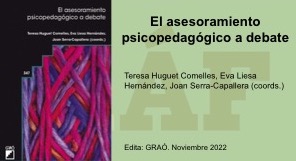Usages and reviews of standardized tests i educational systems
Keywords:
Evaluation, Education, CurriculumAbstract
Currently, both locally and internationally, there is a growing importance and development of systems of educational evaluation. The inclusion of tests in education legislative initiatives, the development of evaluative strategies at different levels of the educational administration and international evaluation tests such as PISA are clear indicators of this expansion.
Although in general, the increase of this educational evaluation is somewhat positive, its development is being restricted mainly to a certain methodological perspective: systems of measurement of school performance through standard external examinations or standardized tests. Using one method of evaluation or another is not indifferent. Each method produces different evaluation products that may be more suitable for certain applications and therefore can also lead to different consequences in the evaluated objects, i.e., workplaces or in the educational systems.
School evaluation must be a conscious exercise and aware of the purposes that are intended, to be able to adapt the methods to its use. This article aims to contextualize the standardized tests and analyze the limits and the reviews of this kind of method studying the Spanish case. The text is structured in different sections: historical contextualization, definition and main features of the tests, major reviews and conclusion. Key words: Evaluation.
References
Alvira, F. (1991) Metodología de la evaluación de programas. Madrid: CIS.
Brindusa, A., Cabrales, A., Sainz, J. y Sanz, I. (2012) Publicación de los resultados de las pruebas estandarizadas externas: ¿tiene ello un efecto sobre los resultados escolares. A A. Cabrales y A. Ciccone, La educación en España una visión académica. Fedea Monografías. Recuperado en: http://www.fedea.net/educacion/monografia-2013/web-monografia-educacion-2013.pdf.
Bustelo, M. (2011). Last but not least: gender sensitive evaluations as a forgotten piece of the policymaking process. Paper presented at ECPR General Conference. Reykjavik, August 25-27th 2011.
Center for Teaching and Learning (2015) Bloom´s Taxonomy Educational Objectives. Recuperat a : http://teaching.uncc.edu/learning-resources/articles-books/best-practice/goalsobjectives/blooms-educational-objectives#sthash.3wEM2rqA.dpuf.
Chen, H.T. (1990) Theory-Driven Evaluations. CA: Sage.
Cook, T.D (2004) Causal Generalization: How Campbell and Cronbach Influenced My Theoretical Thinking on This Topic, Incluiding in Shadish, Cook and Campbell. In M. Alkin (Ed.) Evaluation Roots. California: Sage.
Cronbach, L.J. (2000). Course Improvement Through Evaluation. In D. L. Stufflebeam, G.Gl Madaus and T. Kellagha (Eds.) Evaluation Models Viewpoints On Educational and Human Services Evaluation (pp. 235-248). London: Kluwer Academic Publishers.
Echebarria, k (2005) Responsabilización y responsabilización gerencial: instituciones antes que instrumentos. En CLAD Responsabilización y evalución de la gestión pública. Venezuela: CLAD.
España. Ley Orgánica 8/2013, de 9 de diciembre, de Mejora de la Calidad Educativa. Boletín Oficial del Estado, 10 de diciembre de 2013, núm. 295, p. 97858 -97921.
Greene, J. (2007). Mixed Methods in Social Inquiry. John Wiley & Sons.
Guba, E.G. and Lincoln, Y.S. (1989). Fourth Generation Evaluation. CA: Sage.
House, E. (1990). Trends in Evaluation in Educational Researcher Vol. 19, No. 3 (Apr., 1990), pp. 24-28.
INEE (2015) Comunidades Autónomas. Recuperat a : http://www.mecd.gob.es/inee/portada.html.
Joint Committee on Standards for Educational Evaluation (1994). The Program Evaluation2nd edition. Thousands Oaks, CA: Sage.
Mabry, l. (2005) Assessment. In S. Mathison (Ed.) Encyclopedia of Evaluation. Thousand Oaks, CA: Sage.
Madaus, G.F. (2004) Ralph W. Tyler`s Contribution to Program Evaluation. In M. Alkin (Ed.) Evaluation Roots. California: Sage.
Madaus, G.F., Haney, W. and Kreitzer, M. (2000). The Role of Testing in Evaluation. In D. L. Stufflebeam, G.Gl Madaus and T. Kellaghan (Eds.) Evaluation Models Viewpoints On Educational and Human Services Evaluation (pp. 113-126). London: Kluwer Academic Publishers.
Madaus, G. and Stufflebeam, D. (2000) Program Evaluation: A historical overview. In D. L. Stufflebeam, G.Gl Madaus and T. Kellaghan (Eds.), Evaluation Models Viewpoints On Educational and Human Services Evaluation (pp. 3-18). London: Kluwer Academic Publishers.
Milbrey, W. Mc Lauglhlin and Phillips, D.C (1991) Evaluation and Education: At Quarter Century. Chicago, Illinois: The National Society for the Study of Education.
Ministerio de Educación (2007) Educación Primaria. Evaluación general del sistema educativo. Madrid: Ministerio de Educación.
Monnier, E. (1992). Evaluación de la acción de los poderes públicos. Madrid: Instituto de Estudios Fiscales.
Morrison, L. & Schoon, I. (2013) The Impact of Non-Cognitive Skills on Outcomes for Young People. Literature review. London: Institute Of Education. Recuperat a: www.ioe.ac.uk.
Nevo, D. (2009). Accountability and Capacity Building: Can they live together? In K.E. Ryan and J. B. Cousins (Eds.) The Sage International Handbook of Educational Evaluation(pp.291-304). CA: Sage.
Nevo, D. (2006) Evaluation in Education. In I.F. Shaw, J.C. Greene and M.M. Mark (Eds.), The Sage Handbook of Evaluation (pp. 441-460). London: Sage.
Pastré, P., Mayen, P. et Vergnaud, G.(2006) La didactique professionnelle, Revue Française de Pédagogie (janvier-mars)
Patton, M.Q. (2008).Utilization-Focused Evaluation. California: Sage.
PISA (2014) PISA 2012 Programa para la evaluación internacional de los alumnos. Madrid: OCDE y Ministerio de Educación, cultura y Deporte.
Ritchie, C. (1971). Can We Afford to Ignore It? Educational Leadership, 484-485.
Rizvi, F. (2009) Globalization and Policy Research in Education. In K.E. Ryan and J. B. Cousins (Eds.) The Sage International Handbook of Educational Evaluation (pp.3-18). CA: Sage.
Ryan, K.E. and Cousins J.B. (2009) Introduction. In K.E. Ryan and J. B. Cousins (Eds.) The Sage International Handbook of Educational Evaluation (pp.ix-xvii). CA: Sage.
Schwandt, T.A (2009) Globalizing Influences on the Western Evaluation Imaginary. In K.E. Ryan and J. B. Cousins (Eds.) The Sage International Handbook of Educational Evaluation (pp.19-36). CA: Sage.
Scriven, Michael. (1991). Beyond Formative and Summative Evaluation. In W. . Milbrey,W. Mclaughlin y D.C Phillips (Eds.) Evaluation and Education: At Quarter Century. Chicago, Illinois: The National Society for the Study of Education.
Shadish, W., Cook, T.& Leviton, L. (1991). Foundations of Program Evaluation. Ca: Sage.
Stake (2006). Evaluación comprensiva y evaluación basada en estándares. Barcelona: Grao.
Stufflebeam, D. (2005) CIPP Model. In S. Mathison (Ed.) Encyclopedia of Evaluation. Thousand Oaks, CA: Sage.
Stufflebeam, D. (2001). Evaluation Models. San Francisco: New Directions in Program Evaluation.
Tyler, R. (1991). General Statement on Program Evaluation. In M.W. McLaughlin and D.C. Phillips (Eds.) Evaluation and Education: At Quarter Century. Chicago, Illinois: The National Society for the Study of Education.
Weiss, C. (1998). Evaluation. New Jersey: Prentice – Hall.

Downloads
Published
Issue
Section
License
The authors maintain their copyright and give the right to the first publication of the work to the journal, registered under a Creative Commons Attribution-Non Commercial-NoDerivs license. This license allows others to download the works and to share them with others as long as they credit the author, but it does not allow for any kind of modification or commercial use.














